![]()
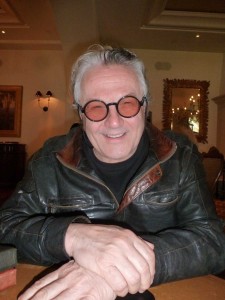
Released by Warner Bros., the movie has taken in $375 million at the global box office and been hailed by critics as one of best action films in years. It was just named the year’s best picture by the National Board of Review. The film stars Tom Hardy as the iconic anti-hero Max Rockatansky (replacing Mel Gibson who created the role) and Charlize Theron as the one-armed Imperator Furioso, adding a feminist element to the plot.
Mad Max: Fury Road comes to the screen 30 years after Mad Max Beyond the Thunderdome, the third film in the series. Australian director and screenwriter Miller, the conceptualizer and presiding genius for all four films, recently talked to Below the Line about the new movie’s Herculean production requirements, and the long gestation period amounting to a decade of intermittent pre-production before the shoot finally started in Namibia in 2012.
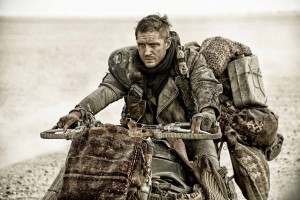
It grew into 3,500 detailed panels that became a kind of Magna Carta for the film, substituting for a conventional script and serving as a visual first draft for the look of the film. “In storyboarding the movie you are able to include a lot of detail for the crew,” he noted. “The storyboard is definitely a production document. It gives the camera crew a very good idea of where the camera will be, describes the vehicles and the course in a car chase, and even gives you a sense of the overall landscape and design.”
Finding a location for the shoot became an epic task in itself. The search was for a flat desert-like setting that also had canyons and could support the infrastructure for a sizeable shoot. After a worldwide search, the decision was made to return to Broken Hill in the vast Outback region in the center of Australia where Road Warrior had been shot. But after two years of record rainfalls, the normally arid spaces were covered with wildflowers. The fallback became Namibia in the south of Africa facing the Atlantic, where rain is extremely rare and which features within the vast Namib Desert a variety of looks and a limitless expanse for staging the extended car chases. Swakopmund, on the Skeleton Coast, became the production hub.
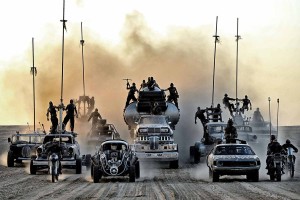 The task was then to start breaking down, packing up, and shipping out every component of the massive production which had been created, assembled and fabricated during the long prep – including 150 vehicles elaborately designed by Gibson – from the east coast of Australia around Sydney to the west coast of Africa. When filming got into full swing, there were over 1,700 crew members, with an average of a thousand people on set at any given time. Base camp was the size of about three football fields, and had to be moved six times over the 128-day shoot. Five 8 X 8 former German military transport trucks were employed just to haul gear from location to location.
The task was then to start breaking down, packing up, and shipping out every component of the massive production which had been created, assembled and fabricated during the long prep – including 150 vehicles elaborately designed by Gibson – from the east coast of Australia around Sydney to the west coast of Africa. When filming got into full swing, there were over 1,700 crew members, with an average of a thousand people on set at any given time. Base camp was the size of about three football fields, and had to be moved six times over the 128-day shoot. Five 8 X 8 former German military transport trucks were employed just to haul gear from location to location.
Another glitch: director of photography Dean Semler, who had lensed the second and third Mad Max films, Road Warrior and Beyond the Thunderdome, and spent three years preparing for Fury Road, designing an innovative smaller-sized 3D camera for the film, dropped out when the shoot moved to Namibia because he would be too far from his family in Australia for too long. Enter John Seale, who had been Miller’s DP on Lorenzo’s Oil (1991).
Though Seale had just retired, the director prevailed on him to step in. He faced a daunting challenge, because he had never shot digitally before, but quickly rose to the occasion. “The great thing about Johnny is he’s not afraid to adapt to new technology, and he’s also the master when it comes to using multiple cameras,” said Miller. And there were multiple cameras. Seale and his team would have an average of three to four ARRI Alexa Plus cameras and two to four ARRI M Steadicams running simultaneously each day, plus helicopter aerials and sacrificial crash-cams with retrievable digital cards. There were half a dozen camera operators including Seale himself. The DP worked closely with second unit director and stunt coordinator Guy Norris, who supervised his own team of camera operators.
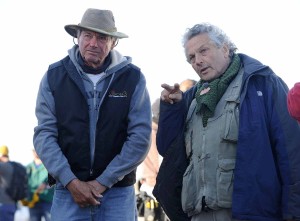
The most important innovation was the use of the Edge Arm Camera System which provided some of the film’s most stunning shots. Mounted on the roof of a truck, the Edge is a gyro-stabilized camera crane that extends more than 20 feet, can rotate 360-degrees, and has a full range of motion in any direction. “It was totally versatile and gave us some wild shots we never could have obtained any other way,” he observed. “It proved to be so effective we ended up with two.”
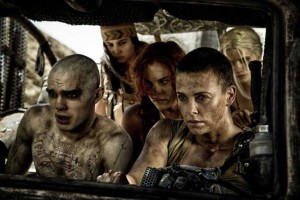 Miller prefers the camera to concentrate on the most important visual element. “I always say to the operators, when in doubt, take the most dynamic or important ingredient, and put it into the center of the frame,” he said. “My basic rule is to shoot very tight along the line of action, because that enhances the dimensional space and volume. Action can become like visual noise if you don’t pay a lot of attention to eye scan, where the eyes are likely to be at any given moment, particularly with a cross cut. In a film like this that is arguably just one long chase, it’s very important to stick to this principle, or the film starts to look incoherent. And I also know it will cut better.”
Miller prefers the camera to concentrate on the most important visual element. “I always say to the operators, when in doubt, take the most dynamic or important ingredient, and put it into the center of the frame,” he said. “My basic rule is to shoot very tight along the line of action, because that enhances the dimensional space and volume. Action can become like visual noise if you don’t pay a lot of attention to eye scan, where the eyes are likely to be at any given moment, particularly with a cross cut. In a film like this that is arguably just one long chase, it’s very important to stick to this principle, or the film starts to look incoherent. And I also know it will cut better.”
Sixel, the film’s editor, was handed 470 hours of footage. She managed to edit it down to a tight 110 minutes, the length of Fury Road when it finally hit theaters. Sixel, who is Miller’s wife, had worked with him on Babe: Pig in the City and Happy Feet, winner for best animated feature in 2007, getting Miller an Oscar as well. “Margaret’s not into action, but I prevailed on her,” said the director. “She knows how to shape a story, and I have tremendous respect for her ability to always come up with the next interesting shot. In the end she was able to engineer the dimensions of time and forge all the pieces into one seamless immersive experience.” Adding to the complexity of the task, the average length of an edit was less than 3 seconds in length. “All movies are getting faster,” observed Miller. “The second Mad Max had just over 1200 shots, this one 30 years later has 2800 shots.”
For both Gibson’s production design and Beavan’s costume design, Miller laid out a basic strategy: “Anything that exists in the Wasteland is a found object, which has been repurposed. And each piece has to have a logic that explained how it survived the apocalypse,” he explained. It was also important to include an artful aesthetic. “Just because it’s a Wasteland doesn’t mean that people don’t make beautiful things,” he noted. He asked for a stockpile to be created of objects or materials “that had inherent interest or beauty and that we could then take out of context and reuse.”
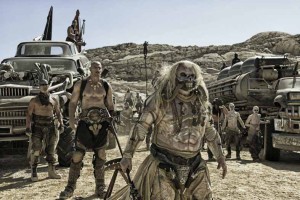 Beavan, known best for her costumes for English period dramas like Gosford Park, Sense and Sensibility and The King’s Speech was able to go far beyond that comfort zone to create a distinctive post-apocalypse wardrobe, highly individualized for each of the characters. From the many years of prep, Beavan discovered in Australia a treasure trove of boxes stuffed with bits of metal, cloth, spare car parts. The mountain of cartons were hauled to Namibia and proved to be highly useful for creating the film’s costumes, along with fabrics and materials crafted by local artisans.
Beavan, known best for her costumes for English period dramas like Gosford Park, Sense and Sensibility and The King’s Speech was able to go far beyond that comfort zone to create a distinctive post-apocalypse wardrobe, highly individualized for each of the characters. From the many years of prep, Beavan discovered in Australia a treasure trove of boxes stuffed with bits of metal, cloth, spare car parts. The mountain of cartons were hauled to Namibia and proved to be highly useful for creating the film’s costumes, along with fabrics and materials crafted by local artisans.
An extra challenge was to fabricate the weirdly wonderful metal masks for characters like the frightening horse-toothed one for Immortan Joe, the Warlord of the Wasteland. Beavan brought in concept artist Paul Jeacock from England to come up with some of the masks which are an integral part of the overall production design. He went at it with gusto, following Miller’s idea of repurposing found objects. “Paul took his brother’s old motorcycle helmet, put a blowtorch to it to melt it and that became part of Jo’s mask,” said the director. Gibson demonstrated his own perverse ingenuity in designing the 150 vehicles that play a central role in Fury Road. The body of the Gigahorse, for example, was made of two 1959 Cadillac Coupe de Villes welded together. “Often it was Colin, Jenny and Paul all working together to come with the design concepts,” said Miller.





